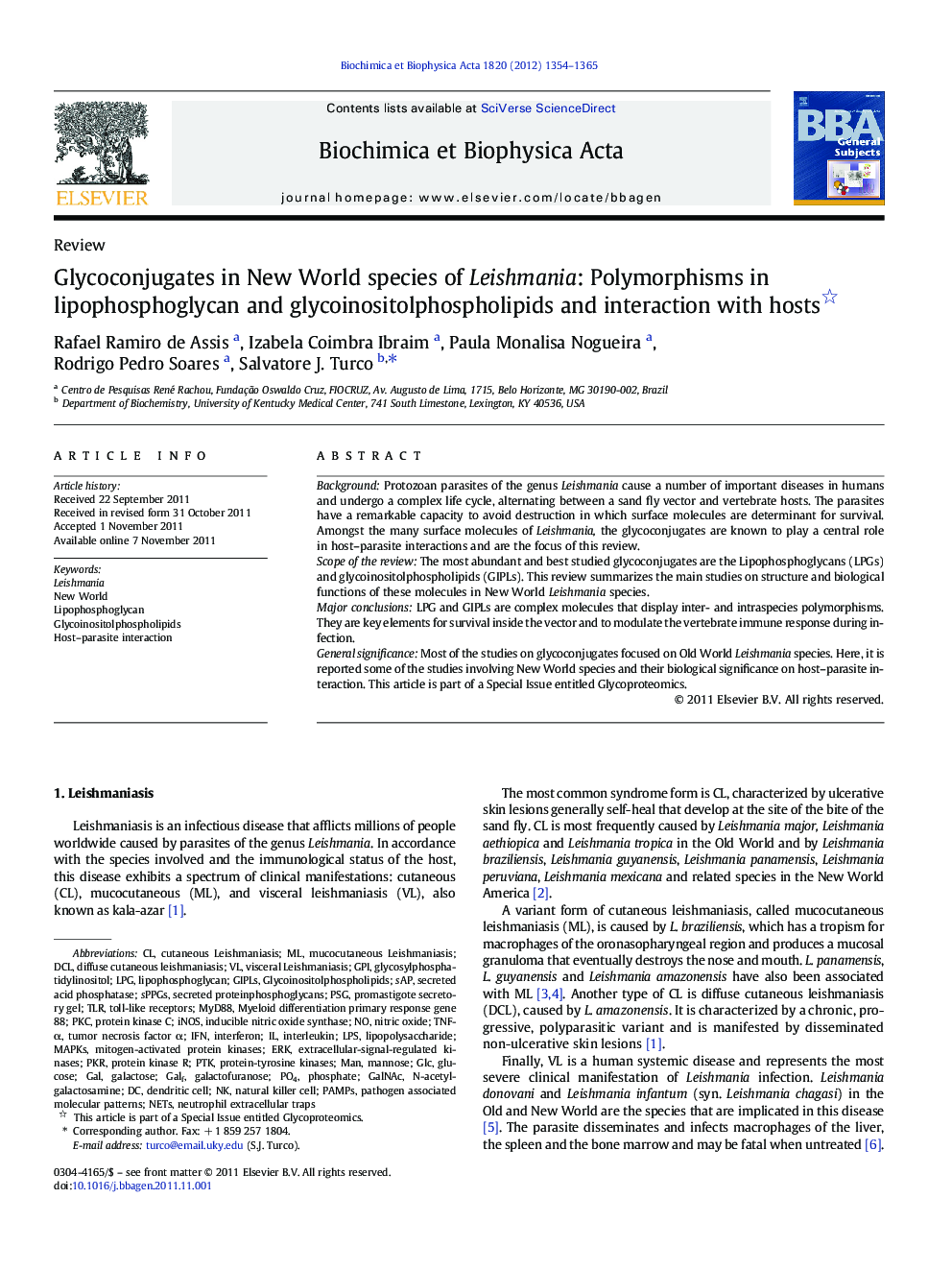| کد مقاله | کد نشریه | سال انتشار | مقاله انگلیسی | نسخه تمام متن |
|---|---|---|---|---|
| 1947686 | 1054639 | 2012 | 12 صفحه PDF | دانلود رایگان |

BackgroundProtozoan parasites of the genus Leishmania cause a number of important diseases in humans and undergo a complex life cycle, alternating between a sand fly vector and vertebrate hosts. The parasites have a remarkable capacity to avoid destruction in which surface molecules are determinant for survival. Amongst the many surface molecules of Leishmania, the glycoconjugates are known to play a central role in host–parasite interactions and are the focus of this review.Scope of the reviewThe most abundant and best studied glycoconjugates are the Lipophosphoglycans (LPGs) and glycoinositolphospholipids (GIPLs). This review summarizes the main studies on structure and biological functions of these molecules in New World Leishmania species.Major conclusionsLPG and GIPLs are complex molecules that display inter- and intraspecies polymorphisms. They are key elements for survival inside the vector and to modulate the vertebrate immune response during infection.General significanceMost of the studies on glycoconjugates focused on Old World Leishmania species. Here, it is reported some of the studies involving New World species and their biological significance on host–parasite interaction. This article is part of a Special Issue entitled Glycoproteomics.
Figure optionsDownload high-quality image (174 K)Download as PowerPoint slideHighlights
► This review summarizes the role of Leishmania glycoconjugates in the interaction with hosts.
► The LPG and GIPLs from Old and New World species of Leishmania exhibit structural polymorphisms.
► These features are important in the specificity with the sand fly.
► LPG and GIPLs modulate important functions in the vertebrate host enabling parasite survival.
Journal: Biochimica et Biophysica Acta (BBA) - General Subjects - Volume 1820, Issue 9, September 2012, Pages 1354–1365